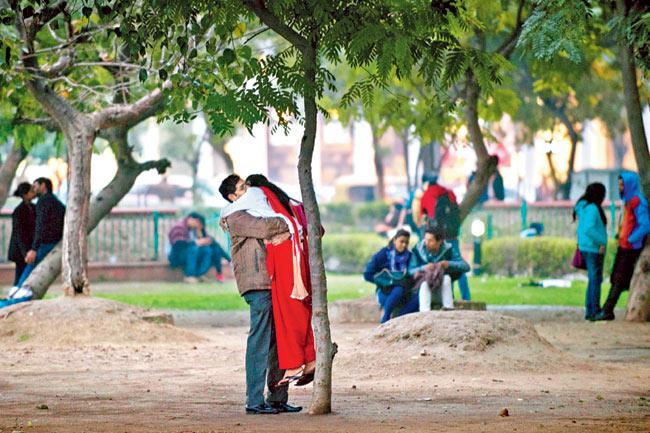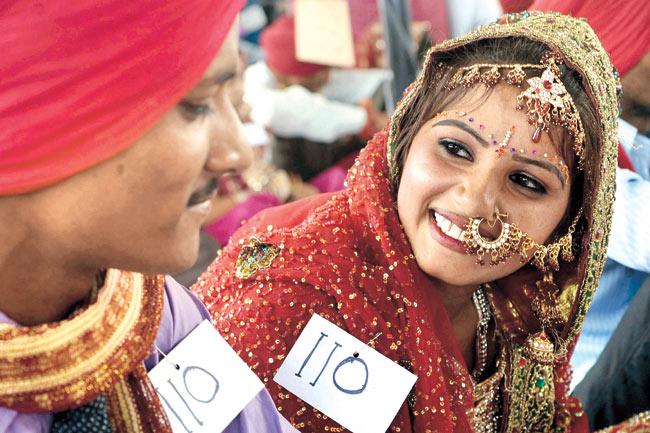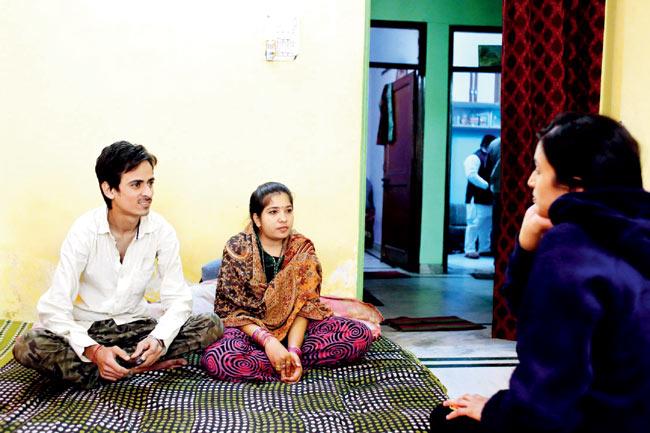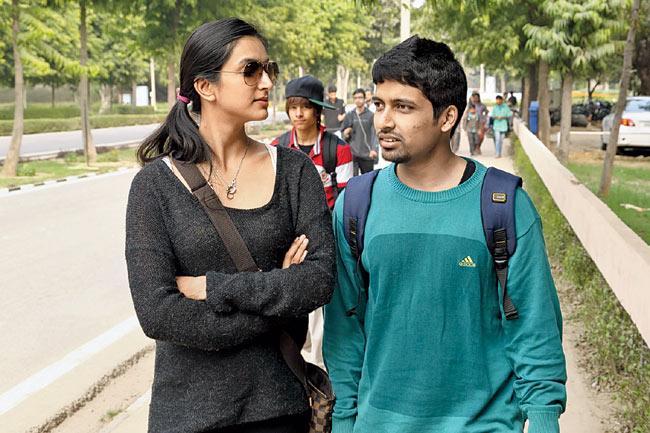India is ready and open to talk about the 'S' word! Ira Trivedi's new title, India in Love, explores love, sex, marriage and relationships across the great Indian diaspora. The facts will fascinate, the stats will surprise, but the truth remains that India is a country that loves to love — age, caste, sex, no bar

“Everything in life is about sex, except sex. Sex is about power,” says Kevin Spacey, quoting Oscar Wilde in the hit American television drama House of Cards. Spacey plays power-hungry Francis Underwood, whose marriage to Claire seems so calculated, it would leave Pythagoras scratching his head — not investment banker-turned-author Ira Trivedi though, now that she has scoped this country examining the far more complex arrangements that pass for modern-day marriages here. Wilde’s insight is interesting in light of the developing observations and accounts Trivedi has recorded in the book, India in Love.

ADVERTISEMENT
How, for instance, is the abuse of power —whether parental or institutional — shaping the sexual landscape in a country where Khap Panchayats advocate child marriage and nine-year-olds have been found distributing pornographic materials in class, yet where sexual education at schools has been forbidden as, since 1969, has been the possession and sale of pornographic material. The search for answers, a personal quest for love and some historical perspective, has yielded a 383-page peek at the evolution of Indian relationships. Excerpts from an interview:
Q. The blurb claims you’ve exposed, “the dark underside to the greater sexual freedom that men and women in our cities have begun to enjoy today.” Yet, you point out that every prevalent practice was represented in ancient art and literature. So, what’s the time frame you spoke of — today, as compared to when?
A. ...as compared to say, fifty or a hundred years ago. Ours was an excessively sexual culture, as is evidenced by carvings on temple walls and mythological texts. I could write volumes on this topic alone, so it was challenging to condense it while presenting a fair and complete view, in order to lead readers through the trajectory of our society’s evolution.

Indian couples hug and chat in a park during Valentine’s Day in New Delhi on February 14, 2014. Pic/AFP
Q. The nature of these stories being so delicate; have names been changed?
A. I have changed some names, but some people didn’t mind sharing their stories and others actually wanted to come forward so those names have remained unchanged. Kapil, the Maratha boy from Phalton who first revealed his homosexuality on Facebook, but whose sister still hopes his sexual-orientation will change, for instance, didn’t mind my using his real name.
Q. How did your family feel about you putting their stories out there?
A. It’s all true, and when they realise that, I believe they’ll be alright with it. After all, these insights have always been there, we just never brought it to the table. To be perfectly honest, my father said, ‘Don’t take the copy to your grandfather’ (laughs).

The author with sex workers from GB Road in Delhi. She discovered their fabulous sense of humour during her time with them
But, it was important to include his stories because the evolving mindsets of people like my grandfather is very much part of this discourse. When we were kids, for instance, he would tell us not to even associate with anyone of a different caste, and when someone in the family married out of the caste 35 years ago, he stopped talking to this person. Yet, now, he absolutely adores my first cousin’s American husband, his non-Indian, Christian grandson-in-law.
Q. Though it’s titled, India in Love, you’ve mainly focussed on Hindu texts and accounts, save for the last 80 pages where Muslims and North-easterners get some attention. There’s barely a fleeting mention of Jews, Christians and Sikhs — why is this?
A. That’s a good point. I wanted to be sure to cover everything and the original manuscript was over 650 pages long — it was a product of four years of full-time work which took me to all the major metros as well as places like Jalandhar, Indore, Bhubaneshwar, Ahmedabad, Shillong, Kochi and other parts of Kerala — so it really came down to picking the most pressing stories and issues. I felt like the changes in Muslim divorce laws, for instance, were crucial to record so that’s there. At some point I had to stop and look at the big picture and pluck what made most sense.

An Indian bride sits with her groom during a mass marriage ceremony in the India-Pakistan border area at Gurdwara Baba Jallan Dass in the village of Naushehra Dhala, 50 kms from Amritsar. PIC/AFP
Q. You write, “The liberal ways of the Khasis are leading to a certain number of problems…” and this leads into the paragraph on Dana Sangma’s suicide in Delhi, an instance, which raised the issue of discrimination. Could you elaborate on this aspect?
A. The sexual freedom of the Khasis, the fact that they don’t believe in marriage — they feel people don’t have to be married to live together and are okay with multiple partners — well, this causes problems when they move to cities like New Delhi. For instance, it’s not unusual for a Khasi woman to throw her arm around a man’s shoulders or hold his hand, but in places like Delhi, Calcutta, Bangalore and Chennai, such behaviour is not looked upon kindly. Wearing short skirts, being friendly...in Shillong, this would not automatically turn them into commodities.
Q. Of all the ancillary facts from your research — for instance, you say, “IT was a sort of new caste system,” suggesting that similar jobs rather than communities form the basis of relationships now and then there’s the chapter on men suffering abuse in relationships which is rarely spoken of in Indian society —what surprised you the most?
A. I was most surprised by the magnitude of the change, the width of it across Indian cities. Take that scene in the sex shop in the movie Queen, for instance — had they inserted something like that in an Indian film even five years ago, who would have understood it?
Q. You’ve written about an IIT Principal who thought ‘LGBT’ was a chemistry experiment and about respondents to a matrimonial ad who thought HIV-positive was an educational qualification — so the research wasn’t all grim? You had your share of laughs?
A. To dedicate four years of one’s life to this research, one has to have a sense of humour. Interestingly, I discovered that the sex workers at brothels had an amazing sense of humour. It’s incredible that despite how dire their lives are, they can still find a way to laugh.
Under the covers
>> The vast majority of gay men still get married: 70 per cent in Mumbai, 82 per cent in smaller cities, according to a 2009 survey by the Humsafar Trust
>> 90 per cent of sex workers’ daughters in India follow their mothers into prostitution (referenced to: ‘Forced Prostitution’, Half the Sky PBS 2012)
 Trivedi talks to talking to Delhi’s love commandos, which is an organisation that offers a roof for runaway couples
Trivedi talks to talking to Delhi’s love commandos, which is an organisation that offers a roof for runaway couples
>> The average middle-class family spends R7.4 lakhs on a wedding, four times India’s annual per capita GDP
>> In 2010, 8,391 dowry death cases were reported across India, meaning a bride was burned every 90 minutes
>> A study conducted in 2011 by the Centre for Transforming India found that a startling 88 per cent of female workers in the country’s growing IT and outsourcing industry experienced sexual harassment on the job
>> 51.7 per cent of urban men think girls who dress provocatively deserve to be teased. Surprisingly, 33.7 per cent urban women think so, too.
A colourful country
In some parts of South India, the mangalsutra of a new bride is made by the hands of a prostitute, and in North-east India, a handful of earth from the threshold of a prostitute's house is required to mould the statue of the Goddess during the Durga Puja festival

Ira Trivedi with Kapil, IIT Delhi’s only openly gay student
According to one report, among those who responded to a series of advertisements seeking HIV-positive partners for HIV-positive men, eight prospective brides thought HIV-positive was an educational qualification
The Cadillac Pimp aka Kanwaljit Singh, ‘could get any girl...From Bollywood actors to top models...’ At the time of his arrest in 2005, Singh had over 300 women working for him and was estimated to make over R10 lakh a month
 Subscribe today by clicking the link and stay updated with the latest news!" Click here!
Subscribe today by clicking the link and stay updated with the latest news!" Click here!







